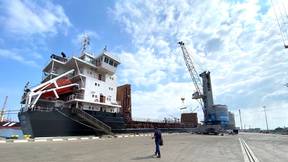The Need for [U.S. Navy Shipbuilding] Speed
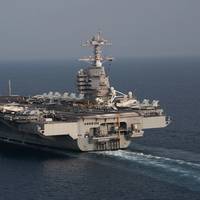
The Navy wants, and needs, more ships; but it can’t build them fast enough.While the U.S. Navy aims to achieve a 355-ship fleet, it is decommissioning older (and some not so old) ships at about the same rate it's adding new ones.A Congressional Research Service report stated that, as of April 17, 2023, the Navy included 296 battle force ships. "The Navy projects that under its FY2024 budget submission, the Navy would include 293 battle force ships at the end of FY2024 and 291 battle force ships at the end of FY2028."But there is progress…
Green Marine: Electrification is the Power behind ‘Future-Proofing’
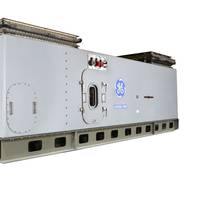
There's an “electrification of the seas” happening for navies around the world.Whether it's to achieve greater military capabilities, operational economics and efficiencies or to be better stewards of the environment.There's a trend moving from direct mechanical drives towards more flexible electrical propulsion systems. Ships can still have the same propellers and engines, but they now have a much more flexible power system architecture that benefits design, operations and sustainment.“With an electric propulsion system, we can connect to the same gas turbine or diesel.
Navantia to Build F-110 Frigates for Spain
Spanish state-owned shipbuilding company Navantia and the Ministry of Defense have signed the contract for the construction of five F-110 frigates for the Spanish Navy.The new generation of F-110 frigates, whose construction will begin shortly in Ferrol, stands out for having its own Spanish design and a high degree of industrial and technological sovereignty. About 80% of purchases and supplies will be made to Spanish companies.The design of this new frigate will incorporate remarkable technological advances, such as the new integrated mast configured with different solutions of sensors and antennas, the incorporation of a multi-space…
Navy of the Future: The Revolution & Evolution of Surface Combatants
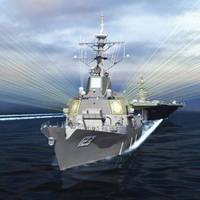
Following the drawdown at the end of the Cold War, the Navy finds itself trying to build up again. The expansion of Russian and Chinese naval power has changed the calculus. While there will always be a debate about the final number of ships to build, we can all agree on one thing: the Navy must get bigger and the demand signal is to start building now,” said Chief of Naval Operations Adm. John Richardson, in testimony before Congress regarding the sea service’s 2019 budget request.
Unmatched Value: How can we not afford to build the Ford Class Aircraft Carrier?
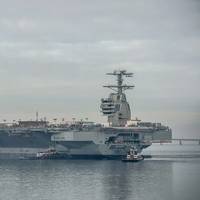
The nuclear powered aircraft carrier (CVN), with its embarked carrier air wing (CVW), is the only maritime force capable of executing the full range of military operations necessary to protect our national interests. From deterrence, to humanitarian assistance, to large-scale combat operations, Carrier Strike Groups (CSGs) stand ready to answer the call in all phases of conflict. Navies across the globe aspire to extend their influence by building aircraft carriers and developing deployment models that mirror what the United States has been doing for more than eighty years.
US Navy Deploys Shipboard Laser Weapon
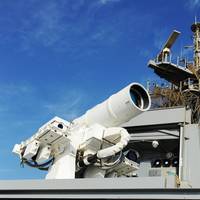
Officials at the Office of Naval Research (ONR) announced the laser weapon system (LaWS) - a cutting-edge weapon that brings new capabilities to America's Sailors and Marines - was for the first time deployed and operated aboard a naval vessel in the Arabian Gulf. The operational demonstrations, which took place from September to November aboard USS Ponce (AFSB[I] 15), were historic not only because they showed a laser weapon working aboard a deployed U.S. Navy ship, but also because LaWS operated seamlessly with existing ship defense systems.
ONR: From Science Fiction to Science Fact

As Director of Innovation, Dr. Larry Schuette is one of three portfolio directors at the Office of Naval Research (ONR). His counterparts are the director of research (discovery and invention) and director of transition. The Office of Innovation promotes, fosters, and develops innovative science, technology, processes and policies that support the Department of the Navy. “I manage the ‘leap ahead’ portfolio here at the Office of Naval Research,” he says. Schuette leads both technological innovation in as well as the business of innovation.
Alion $3.2m DoD Task Order
Alion Science and Technology was awarded a $3.2m task order to maximize the efficiency and accessibility of scientific and technical information (STI) used by the Department of Defense’s (DoD) Weapon Systems Technology Information Analysis Center (WSTIAC). Under the three-year contract, Alion, which operates WSTIAC for the DoD, will help improve the management and use of information related to conventional and directed energy weapons systems technology. The scope of the program includes design, development, testing, evaluation, operations and maintenance of current DoD and military systems. Alion’s efforts will also focus on eliminating duplicate reports and creating and maintaining inventories of relevant knowledge…
Test Site Validates Navy’s New Power System
The surface combatant Integrated Power System (IPS) propulsion Engineering Development Model (EDM) for the U.S. Navy’s new Zumwalt-class DDG 1000 destroyer is being tested at the Land-Based Test Site (LBTS) at the Ships Systems Engineering Station, Philadelphia, PA. The new destroyer will be an all-electric ship. Unlike conventional arrangements where the installed prime mover devotes power to main propulsion, the Zumwalt-class ships will have two large gas turbine generators and two smaller ones that provide power that can be used for propulsion, weapons or ship services. Efficient power management makes the ship’s installed power available to all of the electric loads throughout the ship.
New Warships Will Transform U.S. Navy
Maritime Dominance in the 21st Century calls for naval forces that can project power forward, provide assured access in the littoral environment and support a wide variety of joint and combined operations. To meet this challenge, the U.S. Defeating and deterring future national threats requires a broad range of capabilities from long-range missile defense, precision strike and volume fires to assuring friendly access in the dangerous littoral regions of the world. Transformation of the future fleet will start with the DD(X) technology development effort, from hull and propulsion to sensors and weapons. DD(X) will provide sustained, offensive, distributed, and precise firepower at long ranges to support forces ashore and to conduct time-critical strikes on land targets.


